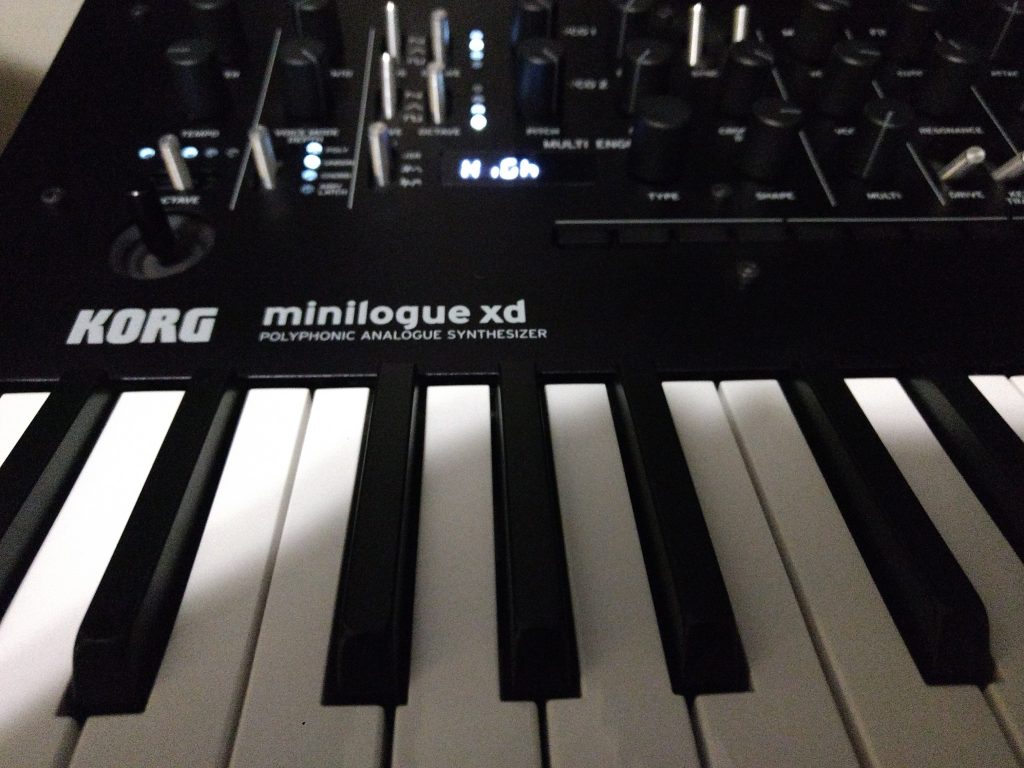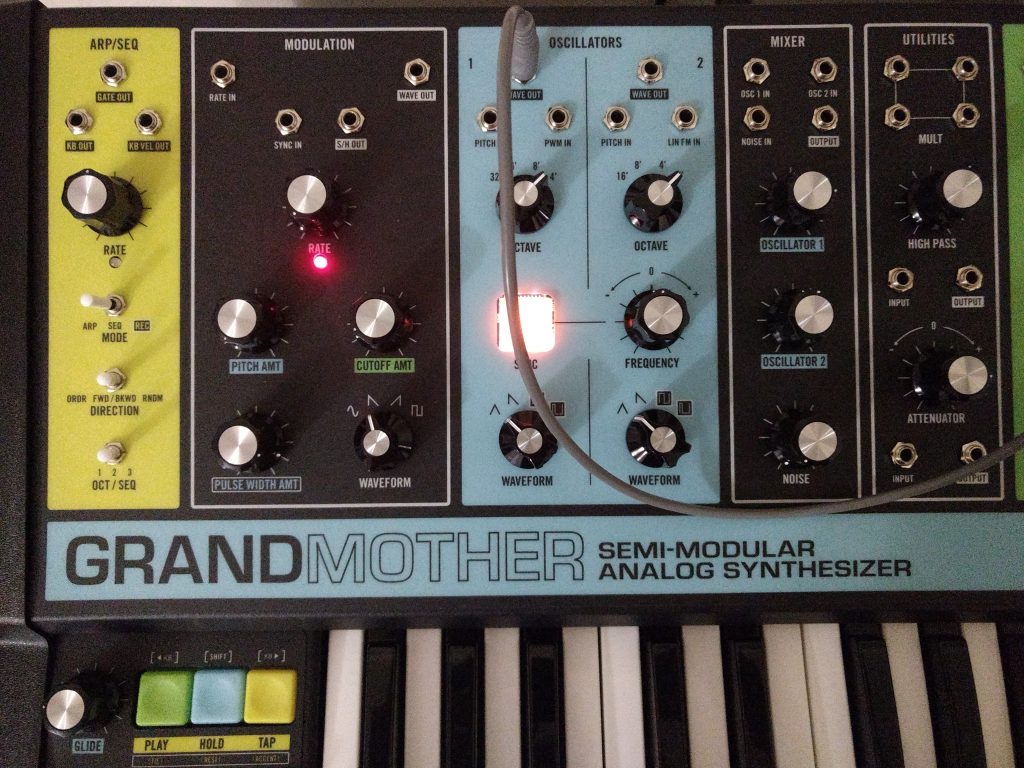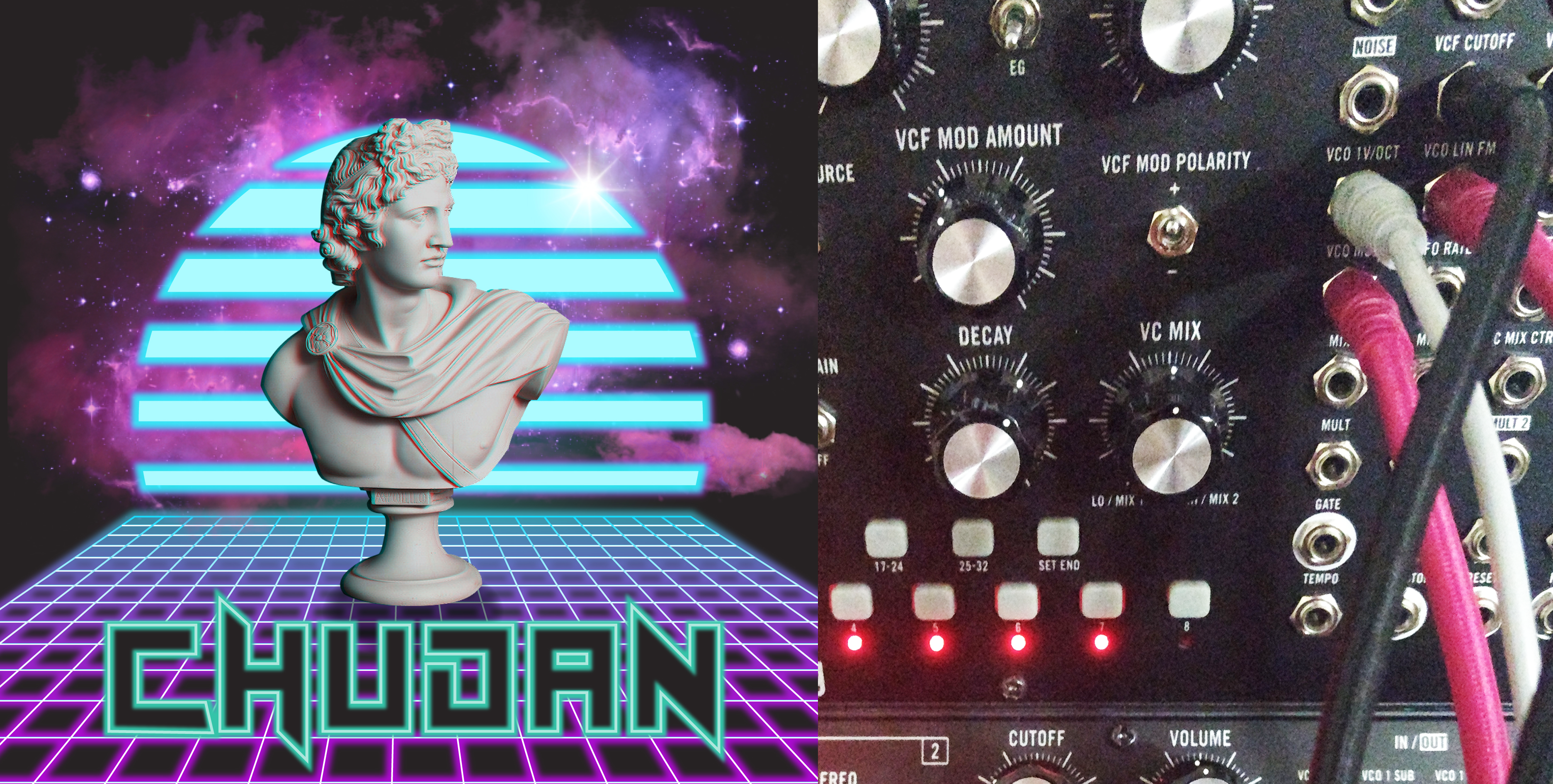By Keith Walsh
Electronic musical instruments have been the choice of film soundtrack composers since their introduction, and have never been more popular than they are today. It’s not because it’s cheaper than commissioning an orchestra – it’s because synthesizers can create sounds and evoke atmospheres that are impossible with traditional instruments.
I spoke with Ben Zuiderweg, whom I met through Nate Bridges of Black Market Dub, about his work on Black Market’s Phantasm Remix (under the pseudonym Chudan) as well as his work scoring films and teaching music in Los Angeles.
SB: When working on spooky material, is there a specific set of techniques in getting synth sounds? I mean the main Phantasm riff is kind of an organ, that works. Sure, resonance, modulation, echo – but I suppose it’s much more a feel kind of thing. There’s no “spooky” preset. (Actually, there probably is on many synths — KW).
BZ: Definitely a feel/improv situation! My main source of inspiration is horror movies, so I really let that guide me. I’m heavily influenced by Alan Howarth, Charles Bernstein, and John Carpenter, so that also gives me some direction. We didn’t have access to the stems for Phantasm, so I re-recorded all of the parts with some patches I made on the XD. This is usually how I approach remixing and composing.

SB: Which of your analog synths was the dominant one here? (On Phantasm)
BZ: The Korg Minilogue XD is definitely the dominant one on this EP. It’s been my go-to synth lately. I just love the way it sounds, and the third digital oscillator opens up a lot of possibilities. I recommend it to everybody! It’s extremely fun to program. You can get massive sounds out of this thing and the effects are insane! Unbeatable synth for the price. Korg has been on a roll lately. Sequential and Moog as well! Very exciting time for synth enthusiasts!
SB: You have a Moog Matriarch, or Grandmother. What’s your opinion of that?
BZ: I don’t own a Matriarch, but I do have a Moog Grandmother. The Moog Grandmother is excellent! The arpeggiator and sequencer are extremely effective tools for composing and generating ideas. It sounds great out-of-the-box, but patching can be used to overwrite the internal connections which can lead to hours of exploration. Plenty of patch points to experiment with! Tons of vibe. Hours can go by without noticing. It’s also built like a tank! The Moog sound and build quality is unbeatable.
SB: What’s the most important tool in a film composer’s toolbox?
BZ: For me, having a DAW is crucial. I mainly use Ableton and Pro Tools. Integrating the ARP 2600 and Moog Subharmonicon into my workflow has also really changed the way I write. These synths are semi-modular, so you can change or alter the signal path which can lead to some really crazy and weird musical ideas. They are also hard-wired, and you can get some really amazing sounds right out of the box, but the real fun begins once you start messing with all of the different patch points. It really opens everything up. This is a great way to work because it can be hard to recreate the same patch twice. You get something new every time which can take things in a very exciting direction.

SB: Was it a difficult decision to stay pretty close the the original score and not add anything else? (In Phantasm)
BZ: It definitely was! I actually did 5 remixes for Phantasm. The movie and score had a huge impact on my life, so I had a lot to say. It was very difficult narrowing it down to 2 remixes. I wanted to keep The Tall Man on Main Street as close to the theme as possible with new and updated sounds. For Mineshaft Chase, I’m actually playing the Stranger Things bass line under the Phantasm theme. I always thought the two would blend together seamlessly, so I wanted to explore that a bit on this remix. It’s also kind of a nod to the impact Phantasm continues to have on movies, television, and the horror genre.
SB: Let’s get into the Stranger Things remixes a bit. I hear that fat Moog sound in yours. It’s hard to know exactly what they used but it was a great moment for fans of vintage analog sounds when that show came out!
BZ: It really was! I just remember every music producer/sound designer posting videos/remixes of the Stranger Things theme. All of my friends and teachers were doing it! Everyone was so excited. I think it inspired a lot of people to not only to explore horror movies from that era but to also explore the world of synthesizers. Black Market and I were no different! I definitely think the show played a huge part in exposing synthwave to a bigger audience.
SB: What are some challenges of working with melodic fragments as found in the Stranger Things soundtrack and how did you handle that to turn them into 3 or 4 minute pieces?
BZ: That was actually the easy part for me! Most of the cues on the show are only 1-2 minutes long so that was a great place to start. I basically wanted longer versions with drums so that’s exactly what I did. Upside Down 3 coming soon…
SB: Your studio is equipped for these kind of analog soundtracks. Do you prefer to use analog or do you have digital strings and brass for situations that call for that?
BZ: I love it all! I still use tons of software synths. Omnisphere is great! It’s used on almost every film score these days. Extremely powerful. Massive and Serum are both excellent as well. I also love Wavetable in Ableton Live 10.
SB: Where do you teach, and what’s your approach to inspiring students?
BZ: I teach sound design at the Los Angeles Film School. We cover production sound, dialogue editing, sound effects editing, Foley, and audio restoration. We examine the expressive power of sound, its ability to support a story, and illicit an emotional response in the viewer. I find the mixing process for movies fascinating! I really love postproduction sound and teaching so it’s the perfect place for me. I’ve never felt more at home. The students and faculty are just awesome. I try my best to bring as much excitement and enthusiasm into the class as possible. It’s a really inspiring place so that makes it easy. I’m extremely passionate about education and the movie making process so that generally gets everyone in my class excited as well. It’s contagious! My students really inspire me. As much as I hope my students are learning from me, I am definitely learning a ton from them. It’s a two-way street!
SB: What is the meaning of the name Chudan?
BZ: Chudan is a term used in martial arts schools. In karate, it refers to striking an opponent’s mid-section. It’s also a basic stance in kendo. The main purpose there is to establish balance. A music instructor of mine recommended a book called Zen Guitar by Philip Toshio Sudo and it really changed the way I looked at the process of making music. After reading the book, I started applying that same terminology used at martial arts schools to what I was doing in the studio and it was a huge game changer for me. Martial arts were also such a huge thing in movies in the 80’s and 90’s, so it seemed like the perfect name for this project, since all of the inspiration is deep rooted in nostalgia and stuff I grew up with. Things like Karate Kid, Ninja Turtles, Blood Sport, etc…
Thanks to Ben and also to Nate Bridges of Black Market!
https://chudan.bandcamp.com/
https://soundcloud.com/znebe
https://www.instagram.com/chudanmusicofficial/
Benjamin Zuiderweg On IMDB
finis
